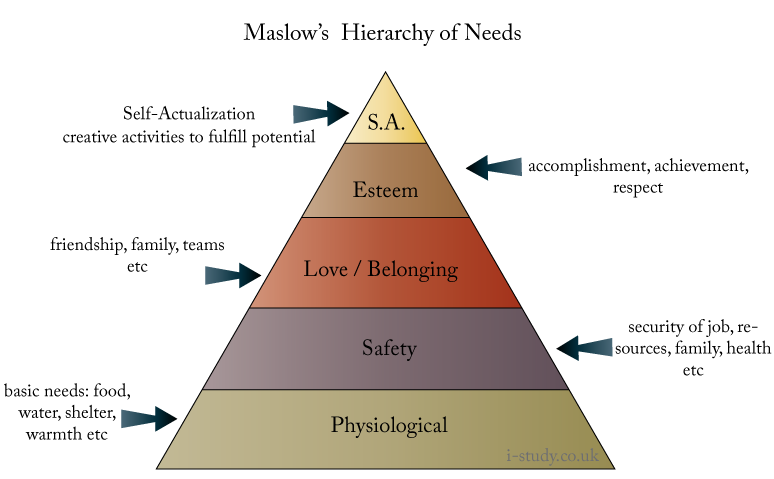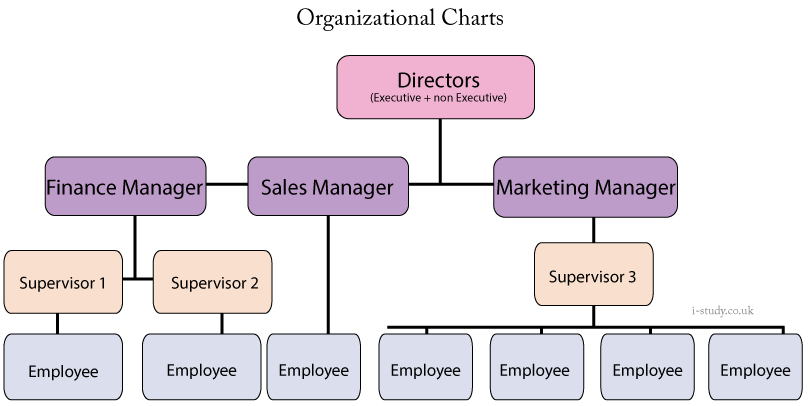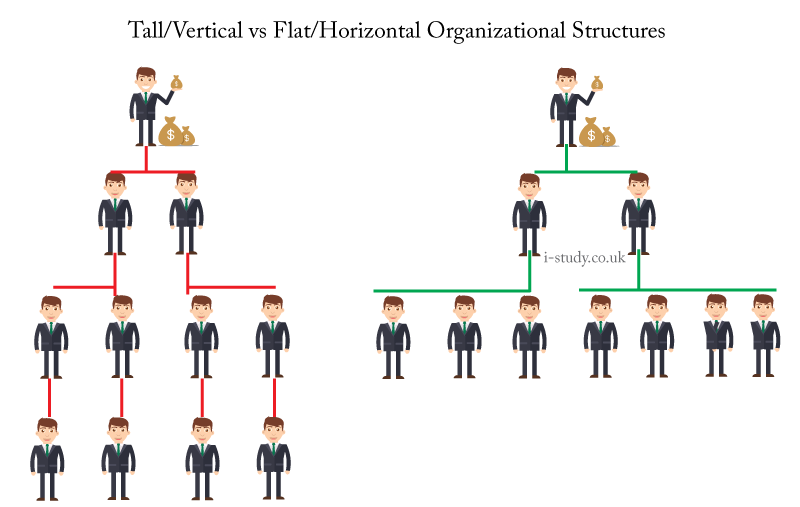

Importance of Motivation
Motivation is a valuable tool for all firms as it helps to:
Maslow's Hierarchy
Abraham Maslow came up with the 'Hierarchy of Needs' to explain motivation in 1968. This claimed that there were levels of needs that each worker had, which would motivate them. Once the most basic needs had been fulfilled, then the worker would look to the next need to motivate them. If managers were aware of this, they could work out how to best motivate the different workers in their companies.

Taylor's Scientific Principle
Taylor’s scientific theory claims that workers are motivated by being skilled in one particular area. They can produce a lot more this way, through specialisation. By producing more, they would get paid more; a scheme known as performance-related pay In many ways, Taylor sees people as being cogs in a big machine.
Herzberg's Two Factor Theory
Herzberg's theory differentiates between two separate groups; motivators and demotivators (which he calls Hygiene Factors). If a company had fantastic hygiene factors (such as job security) this does not mean they are motivated to work hard; however, if they do not look after the hygiene factors, then they will be demotivated and produce much less.
On the other hand, motivational factors are independant from hygiene factors; by rewarding workers, challenging them and giving them recognition for their efforts, they will be motivated to work harder and produce more. Motivational factors are not related to salary.
McGregor's Theory X and Theory Y
McGregor argues that managers can be split into two camps: X and Y
Theory X Managers
Theory Y Managers

Methods of Motivation
There are many ways to motivate workers - Figure 3 shows the financial ways a company can encourage more production.
However, there are also non-financial methods of motivation, including:
These benefits above are often known as perks.
Job Satisfaction
Job satisfaction are ways in which managers can improve motivation by changing the nature of the job that the employees are performing. There are three ways this may be done:


Organisational Structures
All businesses are organised so that all workers know what their role is, and who they are to communicate with if there are problems. Businesses can be organised according to:
Organisational structures, like that above, also tell us:
Look at Figure 2 and answer the following questions:
For more notes don't forget to visit the store!
